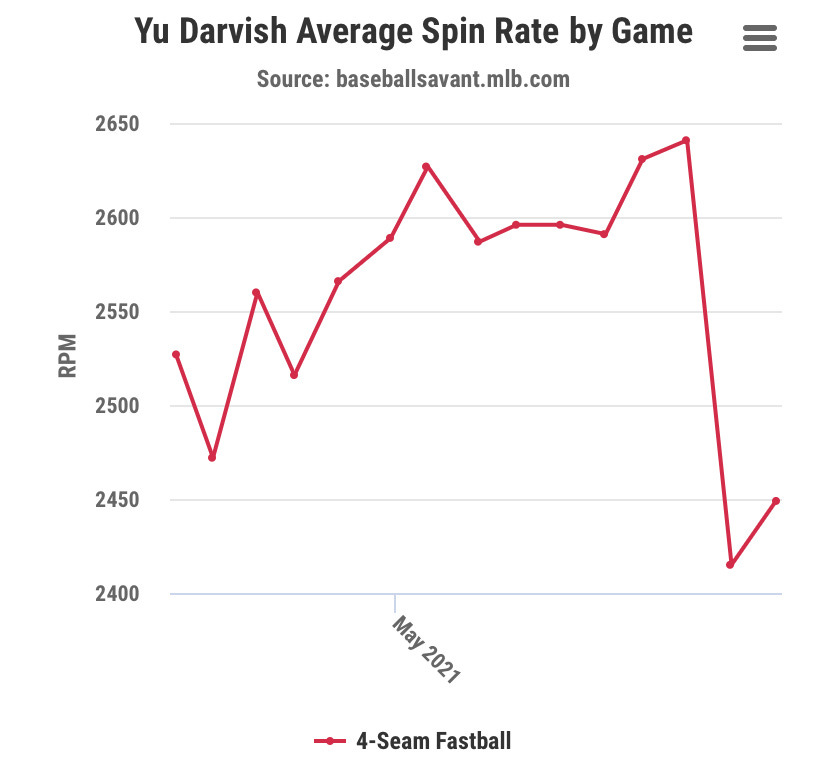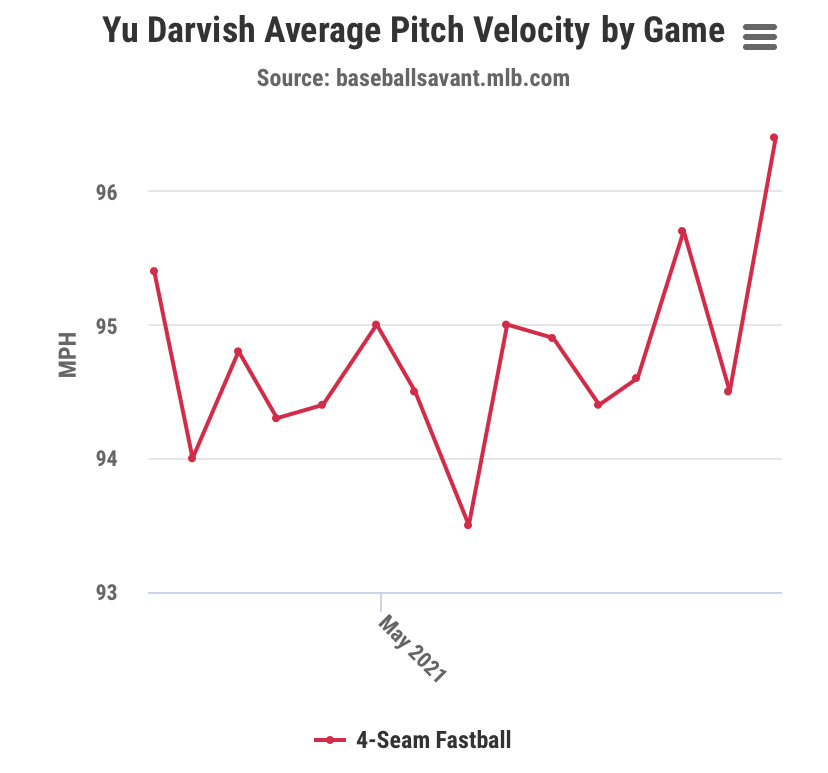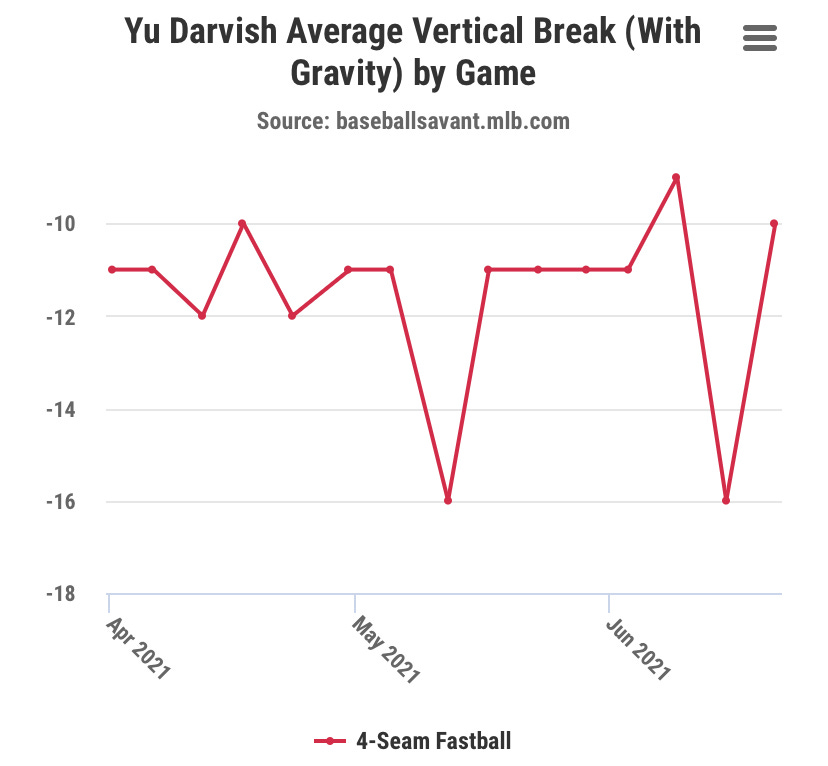As the MLB began enforcing its foreign substances rule yesterday, Yu Darvish experienced a notable drop in his spin rate. Pitching without the added grip against the Dodgers, Darvish struggled through… 6 innings of 1 run ball with 11Ks and a 0.50 WHIP. I think Darvish might survive just fine in a the post-foreign substances era of baseball.
Sticky substances tend to allow a pitcher to spin the ball more, which improves the movement on pitches. But they also tend to allow for a modest improvement in velocity because pitchers can grip-it-and-rip-it without fear that the ball will sail into the crowd as it slips out of their fingers. So what happened when Darvish stopped using the stick ‘em? His RPMs experienced a noticeable drop. Makes sense. His pitch movement and velocity, the aspects that matter the most? Not only did they not drop off, they may have actually improved!
As the number of pitches Darvish throws reaches a threshold that The Count didn’t reach when I was watching Sesame Street as a child, I’m going to focus on just his four-seam fastball and use it as a case report on Darvish’s outing last night. You’ll have to take my word that the rest of his repertoire experienced similar results.
Recent reports suggest that the four-seam fastball and the slider are likely the pitches that are most affected by a drop in spin rate. Typically, when you drop the spin rate of a four-seam fastball, the vertical movement drops due to the decrease in backspin on the ball. This lack of vertical movement causes the ball to drop right where a hitter would expect it to drop (i.e. into the plane of his bat). With more backspin, a fastball gives the optical illusion of “rising” and is extremely difficult to hit.
It is also important to note that Darvish threw his prior game in Coors field. Some pitchers find it difficult to spin the ball in hot dry air but independent of spin, pitches tend to get much worse movement at elevation. The upward Magnus force opposing gravity is less at Coors, so fastballs drop about four inches more (the difference between an average fastball and the best fastball in the game) and breakings balls both drop and break less. His last start against the Rockies also seems to be confounded by his seemingly pitching the first inning and possibly part of the second without any sticky substance, but then reverting back to it (this is my own conjecture based on a sudden increase in RPMs mid-game).
Armed with that information, let’s take a look at last night’s outing…
Source: Baseball Savant
So what do we see here? Despite a noticeable drop in spin rate, Darvish actually had the highest average velocity and some of the best vertical fastball movement of the entire season! His plethora of secondary offerings witnessed similar results. The possibility that any pitcher will over-throw and risk injury in order to achieve similar results or continue cheating in a less-obvious manner remains, but it would be hard to ask for better results from a man who was admittedly using SOME substance to help him grip the baseball earlier in the season.
Round one of the post-sticky era is complete and the result is: Darvish is still an absolute Ace.







